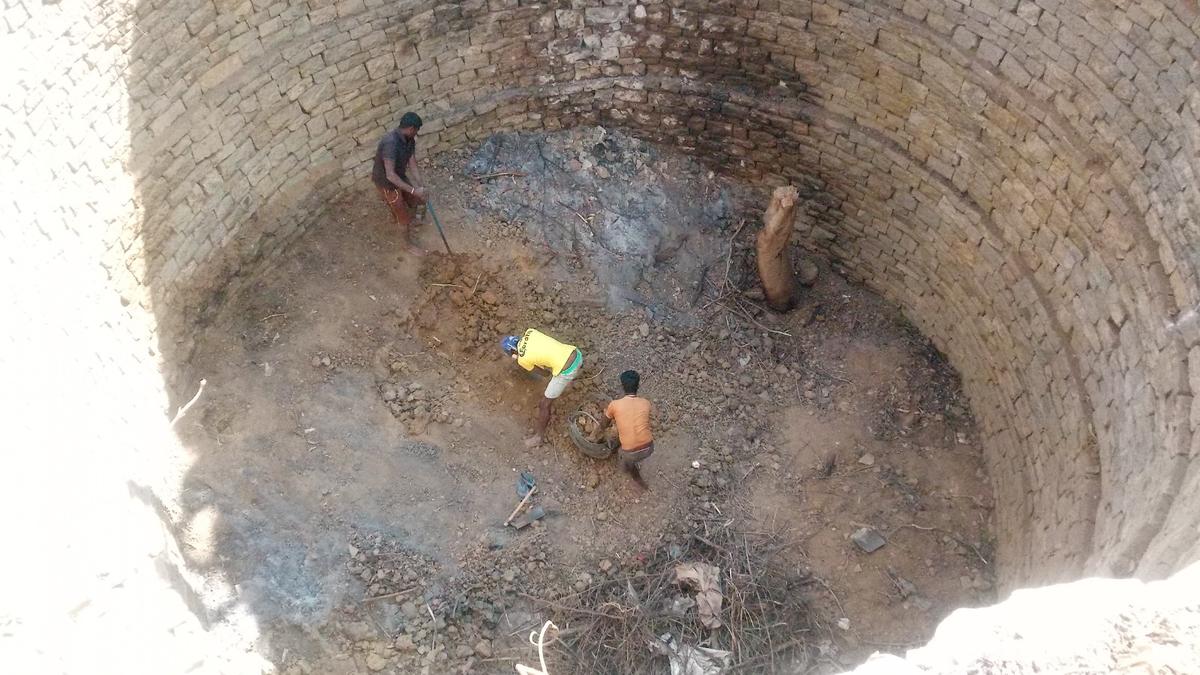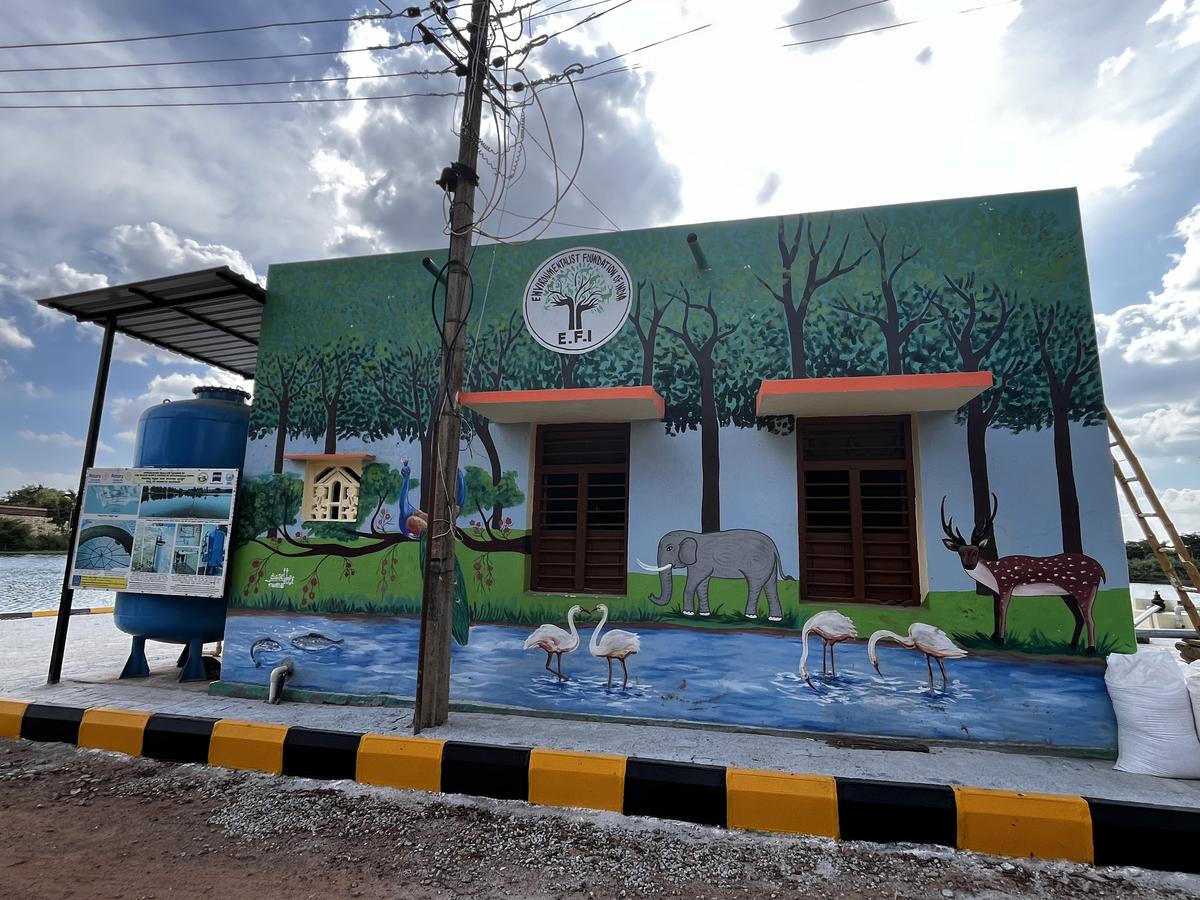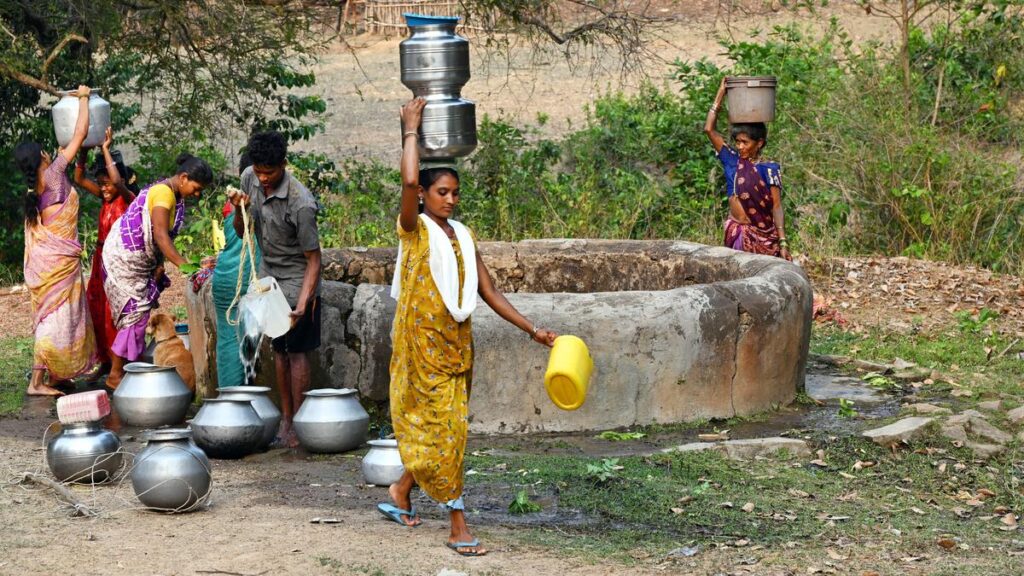The women of Jharia Circle in Dhanbad, Jharkhand were desperate for water. They gathered in a local temple to figure out a solution and then decided to dig a well.
“Without any scientific background, they just knew that [if they] ‘dig a well here, we’ll get some sort of water’,” narrates Anirudh Soni, a research associate at the National Institute for Urban Affairs.

Initially, with the help of men, but later by themselves, the women dug a basic well. It was 25-feet deep, but not fully developed and hence dangerous, says Soni. The women stood on a bamboo mesh spread atop the hole to manually pull just one bucket of water at a time from the pit. One woman even fell into the hole and was seriously injured. Then the women heard about Eklavya Prasad’s team.
Prasad, from the public charitable trust Megh Pyne Abhiyan, was scouting sites in Dhanbad for the Shallow Aquifer Management pilot programme — a 10-city initiative overseen by Soni and his team. The programme, a part of the national Atal Mission for Rejuvenation and Urban Transformation (AMRUT) 2.0, was designed to bring a scientific understanding of groundwater management to cities across the country.

The 35-feet-deep well that is a part of the new shallow aquifer near the Devanahalli lake in Bengaluru.
| Photo Credit:
Biome Environmental Trust
Prasad recalls that when the women learnt his team was in the same locality, they approached them and asked for help to improve the structure and safety of their basic well. It soon became one of the five sites in the city’s pilot efforts to recharge the region’s shallow aquifer — a groundwater resource that’s important for water supply, irrigation, and maintaining ecosystems. Dhanbad is the smallest city in the Shallow Aquifer Management programme (the other cities are Chennai, Hyderabad, Rajkot, Bengaluru, Gwalior, Jaipur, Kolkata, Pune and Thane). Construction of the recharge sites was completed in June 2024.
The local communities are seeing early evidence of their groundwater supply replenishing. The water level in one of the wells in Dhanbad rose 30 feet in just a month. “It’s remarkable, and it reminds us to have confidence in our own observations. It’s truly reassuring,” says Prasad.
During last year’s monsoon, the water level increased in three wells where shallow aquifer recharge projects were implemented. A further test will come during the dry season when the wells usually go dry. Prasad explains that by monitoring the water levels, they are gathering evidence and data on the efficacy of the Shallow Aquifer Management pilot in Dhanbad.
From practice to policy
Nearly 2,000 kilometres south of Dhanbad, and just 37 kilometres from the centre of Bengaluru, a small cluster of buildings, six filter borewells and one 35-feet-deep well are all part of the programme.
The project on the edge of the once-empty but now-rippling Devanahalli Lake had its second phase inaugurated on August 30 last year. It included drilling additional filter borewells, installing 1.5 horsepower pumps, renovating the previously unused sump to store raw water, and upgrading the water treatment plant to handle a capacity of 320 kilolitres of water per day from the six filter borewells. The treated water, after meeting quality standards, is now integrated into the water supply of Devanahalli, where the Kempegowda International Airport is located.
“The project is designed to show what is possible when governments and agencies work together to manage groundwater supply,” says Shivanand, project manager at Biome Environmental Trust, which has coordinated the project. “We cannot execute a project to meet the entire water demand of [Devanahalli]. What we can do is demonstrate what the government can replicate on a bigger scale.”
Vishwanath Srikantaiah, a co-founder of Biome and a leading water expert, says the government’s recent focus on establishing policy around groundwater management is morale-boosting. “Urban shallow aquifers have now become a focus point and cities are being encouraged to develop groundwater management and aquifer recharge systems. We’re able to take practice to policy, thereby influencing large-scale funding, and build knowledge across India,” he says.
Enriching lakes and tanks

The well that will act as a shallow aquifer near the Devanahalli lake in Bengaluru.
| Photo Credit:
Sudhakara Jain
Bengaluru is the only city in India to use treated wastewater for agricultural re-use in neighbouring districts and for filling lakes, says Srikantaiah. Until 2018, the city reused just 8% of its treated wastewater. Now, the number stands at 42%, with plans to reach 100% in the next five years, according to a research published last year by the Indian Institute of Science.
Today, the Devanahalli Lake holds rainwater and treated wastewater — part of the Hebbal-Nagawara Valley Project to pipe treated wastewater from Bengaluru to 65 surface tanks in drought-prone areas of Chikkaballapur district. The treated wastewater’s singular function is to seep into the earth beneath the surface of the tank bed, and recharge groundwater supply. Groundwater then enters the aquifer — a body of porous rock or sediment — and can fill up wells and springs.

The renovated water treatment plant that is a part of the new shallow aquifer near the Devanahalli lake in Bengaluru.
| Photo Credit:
Biome Environmental Trust
A 35-foot-deep open well next to Devanahalli Lake has undergone such a makeover. Members of the traditional well-digging community have cleaned the once empty well, disinfected it, repaired loose stones, built a wall around it, and installed a safety grate on top. Within 48 hours, water in the well rose 12 feet and four inches.
With partner organisations in each of the 10 cities part of the Shallow Aquifer Management programme, Soni and his team have conducted workshops for civic authorities to help them understand the aquifer mapping process. Six cities have completed the project so far. Srikantaiah says it takes a full year to understand how the projects perform during the monsoon and summer months, based on which, they can work on maximising the aquifer’s potential.
Soni hopes the outcomes of these projects in some of the cities, including Bengaluru and Dhanbad, will help people see the physical effect of implementing the project. “There is a notion that groundwater is invisible,” he says. “These cities actually make the invisible visible.”
Holly is a Fulbright-Nehru teaching scholar at Christ (Deemed to be University). Sarah is pursuing her Master’s at the same university.
Published – April 04, 2025 01:36 pm IST
Source:https://www.thehindu.com/society/from-dhanbad-to-bengaluru-wells-in-10-cities-to-get-a-fresh-lease-of-life-with-shallow-aquifers/article69301970.ece

